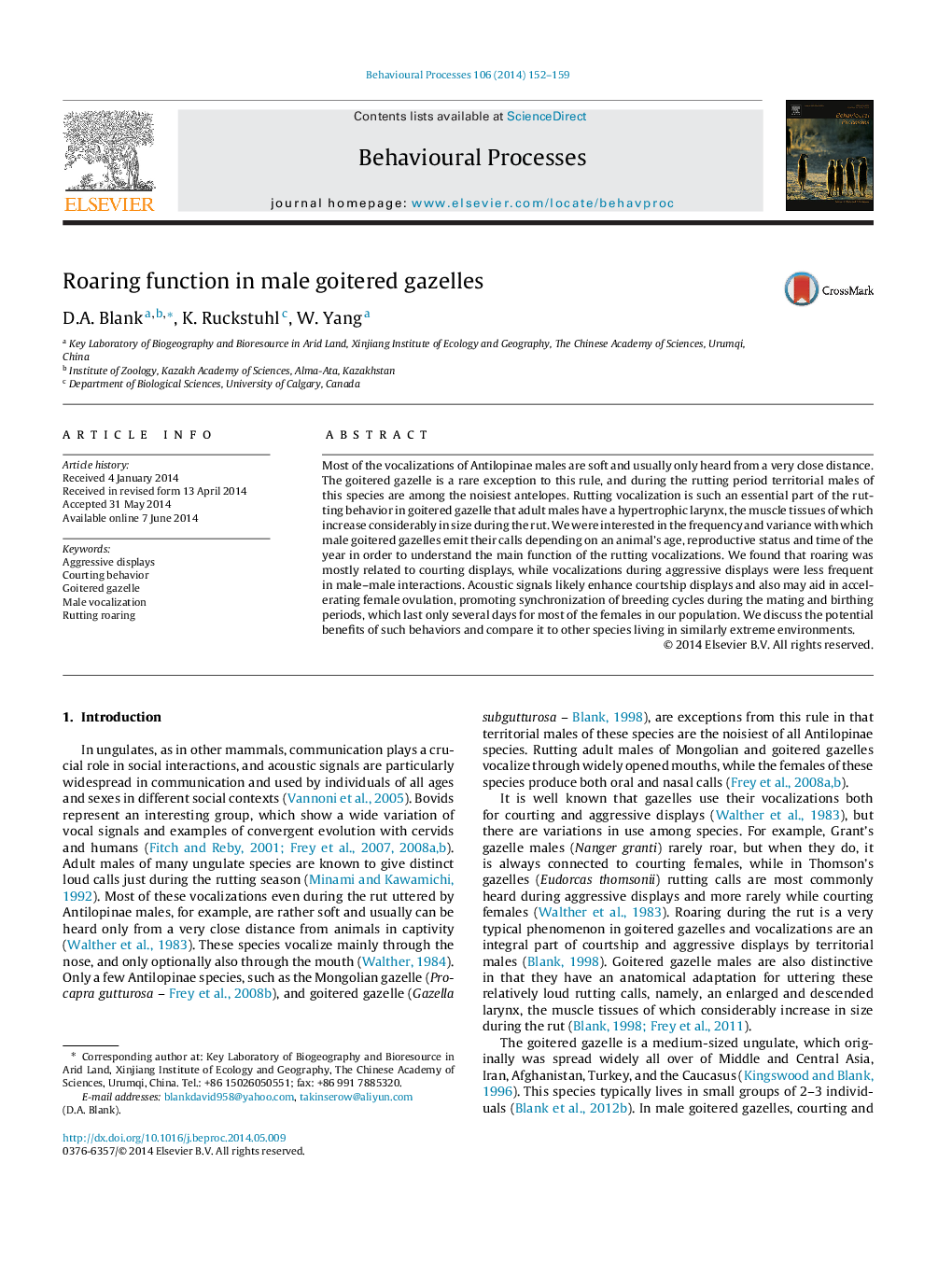| Article ID | Journal | Published Year | Pages | File Type |
|---|---|---|---|---|
| 2426672 | Behavioural Processes | 2014 | 8 Pages |
•The quantitative characteristics of vocalized male displayed in goitered gazelle have never been considered before until now.•Male vocalizations were mostly related to courting females and less often observed during aggressive displays.•Aggressive calls of territorial male were used primarily for expelling male-intruders.•Rutting male vocalizations are likely to promote synchronization of breeding cycles for most females in the population.
Most of the vocalizations of Antilopinae males are soft and usually only heard from a very close distance. The goitered gazelle is a rare exception to this rule, and during the rutting period territorial males of this species are among the noisiest antelopes. Rutting vocalization is such an essential part of the rutting behavior in goitered gazelle that adult males have a hypertrophic larynx, the muscle tissues of which increase considerably in size during the rut. We were interested in the frequency and variance with which male goitered gazelles emit their calls depending on an animal's age, reproductive status and time of the year in order to understand the main function of the rutting vocalizations. We found that roaring was mostly related to courting displays, while vocalizations during aggressive displays were less frequent in male–male interactions. Acoustic signals likely enhance courtship displays and also may aid in accelerating female ovulation, promoting synchronization of breeding cycles during the mating and birthing periods, which last only several days for most of the females in our population. We discuss the potential benefits of such behaviors and compare it to other species living in similarly extreme environments.
